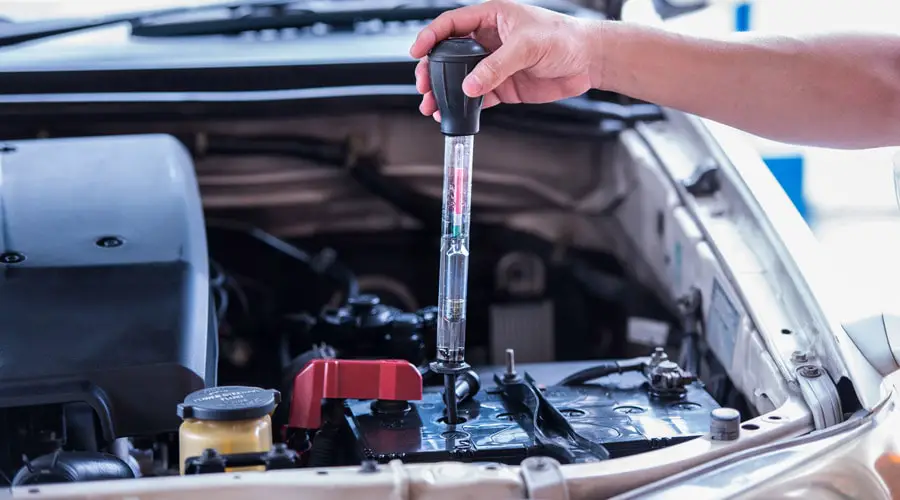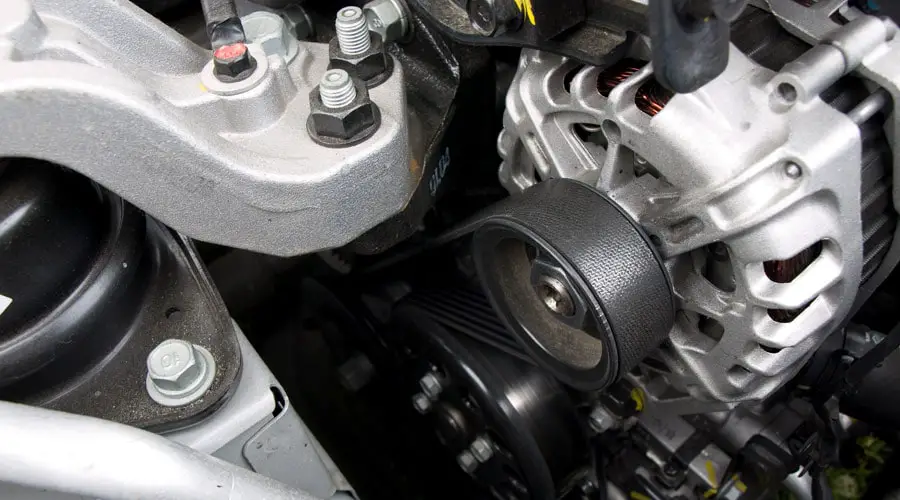
There is nothing worse than getting in your car, turning the key, and hearing only a click or nothing at all. No catch of the starter and no engine sound. When this happens, it is usually because of a car battery issue or the alternator. Figuring out which is the culprit is important as they have very different solutions and costs. One is a fairly simple fix; the other more complicated and costly.
Which is to Blame?
Figuring out the signs of a bad car battery versus a bad alternator is important. To understand the fundamental problem, you have to know how the engine starts and runs. The engine works in a basic three-step method.
The first step involves the starter and the battery. The battery sends a shot of electricity to the starter when you turn your key or push the start button in your car. This begins the process of electricity transfer. Once the starter has engaged, the engine begins to run which puts the alternator to work. The alternator completes the cycle by charging the car battery while the vehicle is running. This keeps the interior and exterior lights on along with any other electrical equipment in the car. It also makes sure the battery is charged when you turn the car off so you can restart it.
thomas brian did a great video on Youtube showing to to determine if it’s a bad battery or bad alternator. Give it a watch before reading on:
There is a quick way to assess whether the battery or the alternator is causing your car issues. It is not definitive but it can give you a possible heads up as to which it might be.
How to quickly test for a bad alternator
[su_panel background=”#ffff” shadow=”2px 2px 2px #eeeeee” radius=”4″] [su_icon_text icon=”icon: wrench” icon_color=”#00a9e0″]Try to jump-start your vehicle. If the engine turns over and seems to start OK but then quickly shuts off, the problem may be your alternator. If you jump-start the vehicle and it doesn’t stall or stop, shut it off manually after a few minutes. Try to restart it without the jump start and if it will not, the battery is most likely the problem.
[/su_icon_text] [/su_panel]
How Do I Know if the Battery is Dead?

Maybe you read out guide about running your laptop with a car battery and decided to give it a try. Well, the good news is that maybe your battery just ran out of charge and needs to be trickle charged.
If you suspect it’s out of juice, the first thing to do when you check on the life of your battery is to look at the dashboard and see what the battery light is showing. The battery should always give off some sort of charge, even if the car is turned off. It often has what is called a trickle charge. If you turn the key to the click before you turn on the full engine, you can see how the interior lights look. If the dash lights are dim, the battery may be telling you that it has a problem. You can also try turning on your wipers, headlights, or put down your windows if they are automatic. Make sure you turn them all off again before you try the engine.

If you try to turn the car engine over and it still won’t start, pop the hood and use a rag to gently wipe off any rust and dirt that might be on the battery. Then, get another car and use jumper cables to try and get it going. If it starts, let it run for a bit to try to charge the battery. Once you have done this, turn it off. Try to restart it without the cables attached. If it will not restart, then that says the battery is doing what it should do while the motor is running which means the alternator is okay. If the battery is not holding its charge when the car is turned off, the battery itself is the problem.
As your car battery gets older, it has more issues holding a charge as the metal inside begins to break down. There will be a point where the battery can no longer hold any power at all no matter how well the alternator is working. The battery amperage cannot power car starting when it is constantly drained.
If your car battery is hot to the touch, it could be going bad.
How Do I know if it’s the Alternator?

If you have gone through the above steps and figured out that the battery seems to be working and is not the issue, you have to look at the car’s alternator. There are some telltale signs that the alternator is failing or is completely done.
- Turn the car on if you can and take a look at the car’s interior lights. They may start out at their normal brightness and then slowly dim. This will be especially noticeable on the dashboard and shows that the alternator is not recharging the battery while the car runs.
- Watch your car’s headlights while you are driving. See if they are getting brighter when you go faster and dim when you slow down or stop. If this is the case, then the alternator is starting to fail as the power to and from the battery is not consistent.
- Listen carefully when you start the car to see if it is making any sounds that are different than usual. If you head something like a growl, that could be a sign that the alternator is failing.
One other sign that the alternator is beginning to go or has failed altogether is the smell of something burning. The odor of burning rubber or if the wires are hot may mean there is a problem. Just be cautious you aren’t misdiagnosing a different issue. If the smell of burning is coming from somewhere else that could be a critical problem as well.
Pro tip – Looking for a good replacement car battery? We suggest the Optima RedtopFinal Thoughts
Once you have an idea of what the issue is, decide whether you need a mechanic to look at it. Batteries are usually fairly simple to replace but alternators take more work. You also need to be sure of the issue so you do not misdiagnose the problem and end up costing yourself more money by repairing the wrong issue.